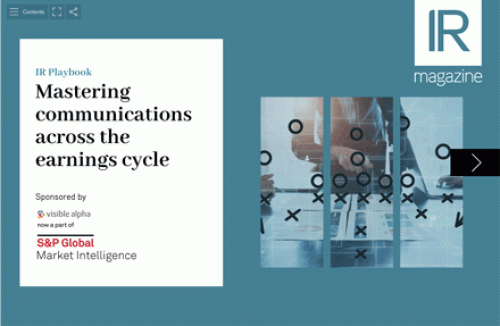Best practice advice from DIRK on applying the new quarterly reporting rules
Listed companies can now be more flexible in their quarterly reporting, after the statutory requirement to publish interim reports was scrapped at the end of November 2015.
Several weeks earlier, the Frankfurt Stock Exchange council (Börsenrat) had decided, in view of this legislative change, to amend its regulations accordingly and to allow companies listed on its Prime Standard segment greater leeway in their publication of quarterly results.
Companies listed on this segment are no longer required to publish a full quarterly report; instead, they may now publish a significantly more concentrated quarterly announcement.
This marks the end of a discussion that has been ongoing for years. Issuers on the Prime Standard have long advocated a relaxation of this requirement, and many investors, both institutional and private, have questioned the added value of a quarterly report that is issued only weeks after the publication of annual or half-yearly financial statements. In its place, they have called for greater quality rather than quantity.
In tandem with the mutual funds association BVI, German IR association DIRK has been instrumental in expanding the debate on greater flexibility of quarterly reporting in recent months, while also taking into consideration the perspectives of widely differing capital market players.
With a view to ensuring transparency and confidence in the German capital market, DIRK explicitly opposes a total abolition of the reporting requirement for Prime Standard companies. Instead, it recommends retaining the half-yearly report in its current form and making the reporting requirement for the first and third quarters more flexible. Investors would thus continue to be informed on a quarterly basis about an issuer’s course of business, but the information should be concentrated, reduced to the essentials and presented in the form of quarterly announcements.
These announcements should explain significant events and business transactions that affect the company’s financial position and its results, and guidance must also be addressed if it has changed significantly from the targets originally set. The Börsenrat’s decision in favor of this procedure is a major step toward financial communication that is characterized by relevance and materiality.
It is now incumbent on issuers to put this newly acquired freedom to the best possible use, but they are right in wondering exactly what shape a quarterly announcement, reduced to the essentials, must take if it is to do justice to the requirements of all capital market participants.
DIRK will be instrumental in dealing with this issue, too. If communication is to deliver what target groups require, neither retaining the previous standards indiscriminately and in full nor fulfilling only the minimum requirements makes sense. What every issuer needs to do is to find the right degree of relevance and transparency in order to promote interest in its share and to boost investor confidence.
Factors such as industry, index membership and the disclosure practices of listed (foreign) competitors will be far more influential in deciding which key figures and information are significant and should continue to be published in a quarterly announcement.
It is already clear that the future shape reports are going to take is being discussed intensively by issuers, which are thinking through a wide range of options. These range from scrapping the letter to the shareholders to dispensing with the notes.
Using graphics along the lines of those adopted by a number of foreign issuers is also under discussion. In the US, for example, GE publishes its key figures in the form of charts and diagrams. The right approach to greater quality and materiality has yet to be found, but the current debate makes one point very clear: issuers are keen to reduce the size of reports, but not at the expense of transparency. And this is exactly the right approach.
The aim of good investor relations is not merely to market shares, but also to convince investors by means of reliably communicated facts and arguments. It can, therefore, already be stated by way of an interim result that consistency and form will continue to be decisive criteria for an issuer’s credibility.
Investor relations in Germany enjoys an outstanding reputation compared with other countries and that is why the newly acquired freedom to be more flexible in quarterly reporting requires responsible action, while also offering a great opportunity to set new standards and to once again do justice to the claim to provide target group-oriented and, above all, highly professional capital market communications.
Kay Bommer is CEO of DIRK










